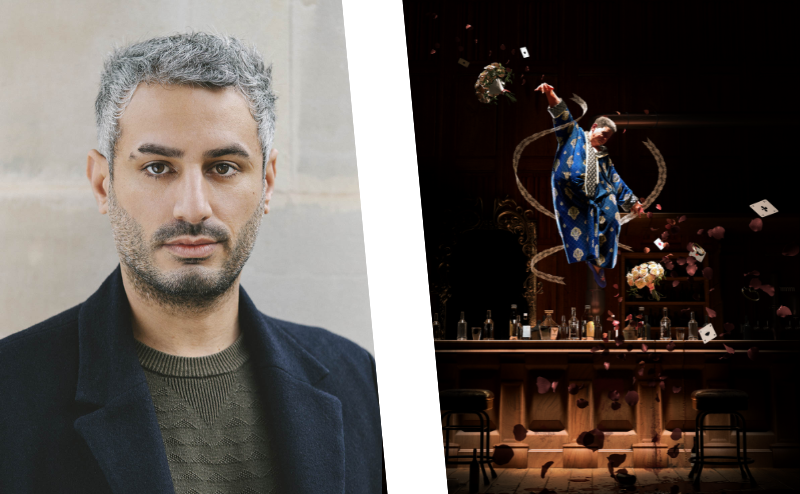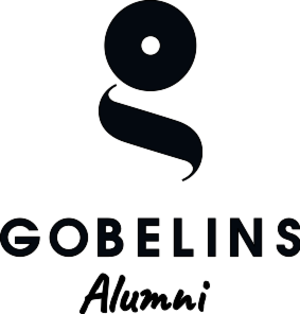News

Keyvan Nourian, Creative director and co-founder of River studio
Graduating from the Licence professionnelle Création et Développement Numérique en Ligne in 2009, Keyvan Nourian began his career as a web designer and art director before co-founding Studio River, his own motion design studio at the very beginning of the advent of this new visual art.
You graduated from the Licence professionnelle Création et Développement Numérique en Ligne in 2009. Can you tell us a bit about your career since graduating?
I've always been very attracted to video. Before joining GOBELINS, I did a BTS in audiovisual editing and a degree in applied art. I also set up a collective to make video clips.
Then I got interested in digital technology, so I could add another string to my bow by learning to develop. I had already started learning HTML and Javascript.
Two months after graduating, I joined Eurokapi on a permanent contract. My job was a bit of a hybrid. The company was beginning to open up to video, and they liked my profile, where video and digital meet. I started working on Flash animations with a bit ofAfter Effects, which was the very beginning of what would become motion.
I stayed with the company for 6 years, first as a graphic designer, computer graphics designer, web designer and art director, then as creative director of Eurokapi's motion design division.
It was in this context that I met Pierrick Selva (my partner), who was working freelance for the division. We wanted to set up our own studio. Motion design was still something very new , and 8 years later we're still at it.
KILIAN PARIS - DC from Studio River on Vimeo.
Can you tell us more about Studio River, the studio you co-founded with Pierrick Selva?
It's a pure player focused on motion design. When the studio was created, we started with classic 2D after (keyframe animation) and frame by frame. The introduction of 3D into motion was a gradual process.
We try to encompass all aspects of animated and audiovisual creation, from writing to production. We're often asked to do concept writing,script writing, concept art, mood boarding, art direction...
For some years now, we've been very focused on 3D, and we also do live action, commercials, filming, VFX... but 3D remains our core business. That's what we're really known for.
We work in a wide variety of fields. We started with data-motion for CAC 40 brands and banks, then quickly moved on to luxury goods, cosmetics and food.
We didn't choose to specialize, as many studios do, so as to be able to explore all fields. We work for Dassault, Cacharel and the French Rugby Federation...
RIVER PARIS Craft Trend from Studio River on Vimeo.
Why did you set up your own studio?
Our initial idea was to create an association, which we called River Dog, to talk about motion.
We had developed a website to publish articles on the latest releases, events, artists to watch...We wanted to put this energy to good use in our own structure, and River Dog became River.
The partnership also grew out of our shared vision of design and creativity. We weren't always happy with the commissions we were asked to work on, so we wanted to reach out to a different type of clientele and experiment with our own successes and failures.
Does your role as manager allow you to continue creating?
We have 6 permanent staff, but can increase to 8 or 9 depending on activity.
We're always creating.
Depending on the project, we may work solely on creative direction and management, but we animate as often as possible. My partner is currently doing animation on films for Dassault, and I've just finished two films for Ploom, a Japanese electronic cigarette brand.
We need to get our hands dirty in production. It's a bit hard when you love creation to have to give it up. It's a fast-moving business, with constantly evolving techniques and software, and you can quickly become overwhelmed if you start to detach yourself from creation.
As a manager, it's also more complicated to lead teams when you don't get down to the nitty-gritty, especially when you're calling on profiles with specific know-how. I need to know how things work to be able to estimate schedules and deadlines correctly.
Which project has impressed you the most?
The project that changed everything for us was the Manifesto we produced for Motion Plus Design. Kook Ewo, the festival's founder, came to me 4 years ago to ask us to be one of his partners.
He asked us to make a small presentation of the studio, to be displayed on the billboard screens during the festival. Instead of making a classic demo reel (i.e. a montage of our projects), we decided on a purely original creation, a sort of manifesto of what we like to do, short and very dynamic.
The film sold very well, was broadcast on Motionographer and Stash , and got us noticed abroad.
Today, the studio is represented in the United States, China and Germany. It was this film that made the difference. We were already well known in France at the time, but not internationally, and it was a complicated market to reach. The manifesto opened doors for us.
MANIFESTO from Studio River on Vimeo.
What do you enjoy most about your job?
Writing is still what we enjoy most. Motion isn't just about beauty. That's a flaw often found in luxury goods. The image has to be aesthetically pleasing, but we don't tell the story.
The projects we like best are those that combine creativity and storytelling. We have an increasing number of repeat customers who place their trust in us and give us a great deal of creative freedom. It's a real luxury. We also try to release one or two personal projects a year. That's our leitmotiv.
This year we'll be doing the oponer at the next edition of Motion Plus in Tokyo, which is an opportunity to experiment with things and work on videos.
A BLUE WAVE from Studio River on Vimeo.
What do you think of the arrival of AI?
I think we're all a bit lost when it comes to AI, but we shouldn't see it as a threat, but rather as a tool.
AI can also do some very interesting things. We use it for textures that would be too complicated to do procedurally, for example. We also use Chat GP to develop and save time.
On the other hand, it can be problematic in theclient approach. Communications agencies who are mainly involved in consulting or support will tend to sell concepts created by AI without taking into account the feasibility of these projects.
For them, AI is a godsend. Software like Midjourney will enable them to easily create concept art, storyboards and scenarios, without the need for special skills. At the end of the day, they'll tend to turn to pure players like us to make the modifications requested by the customer, which means a huge increase in costs that they hadn't anticipated.
There will be a period of adjustment. The arrival of After Effect templates had also hurt the profession, but things have been streamlined. With most tools, the hype eventually dies down and things become normalized.
What advice would you give to a recent graduate?
It's a bit difficult to project ourselves today with the arrival of AI and to know what our job will be in 5 or 6 years' time.
It's interesting to start by working for a big agency to understand what you like and don't like, and then to be able to develop your creativity by working freelance or with a pure player. That's the path I followed.
When you work in a big communications agency, you're often a small cog in the machine, but it's this type of structure that gives you the opportunity to build up a solid network and meet lots of people who can change your life later on.













No comment
Log in to post comment. Log in.